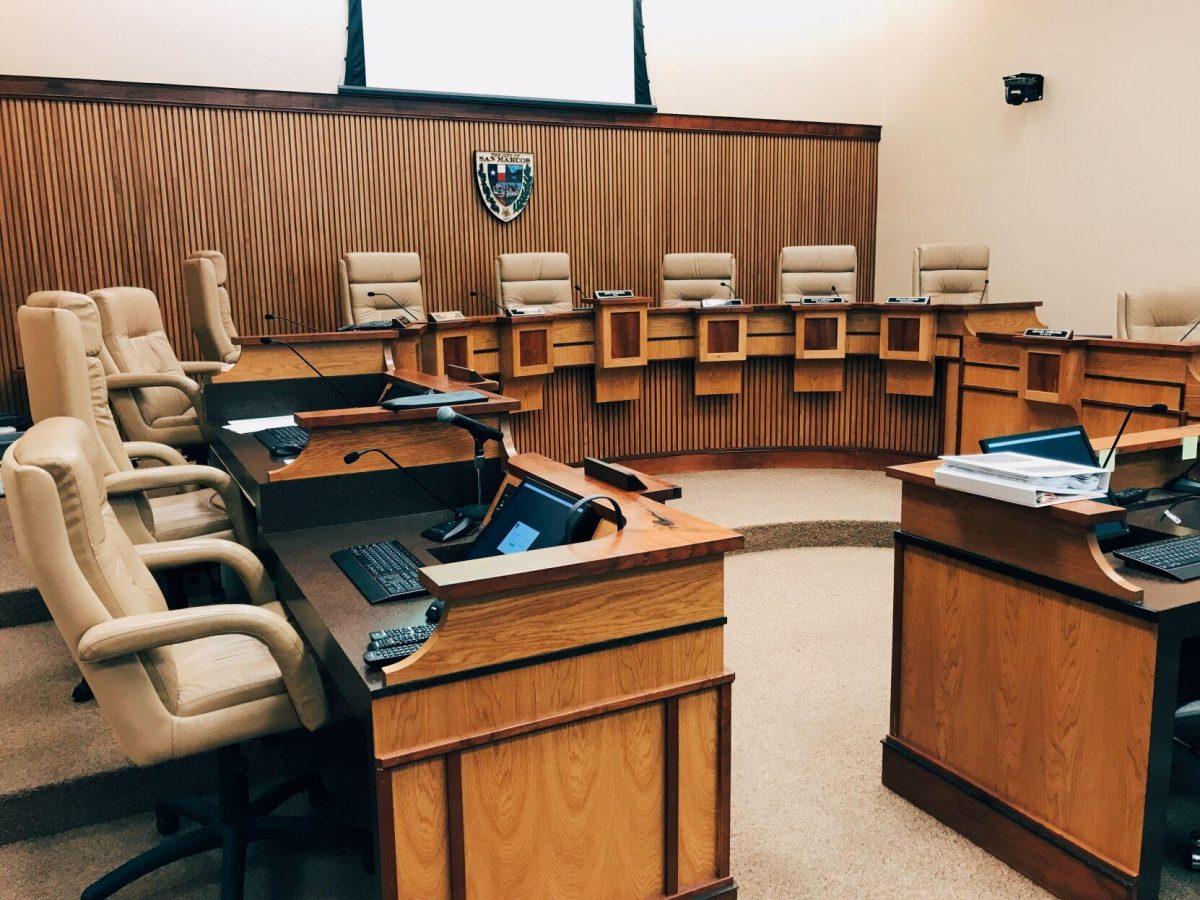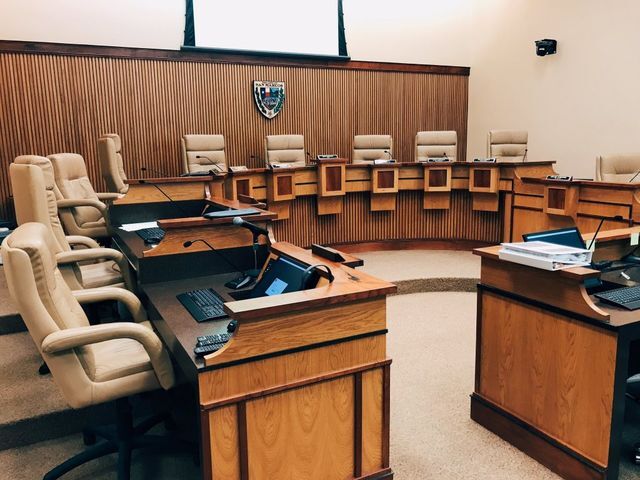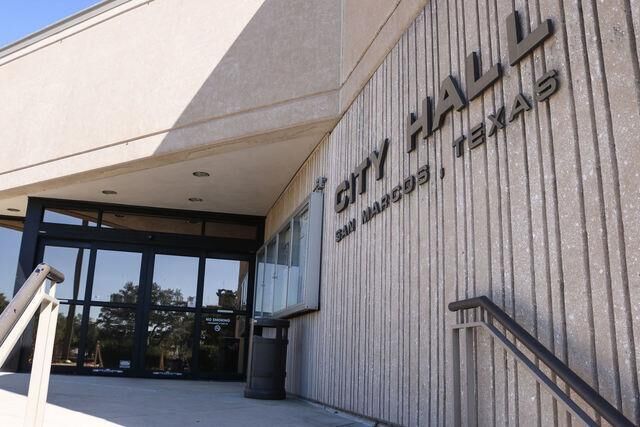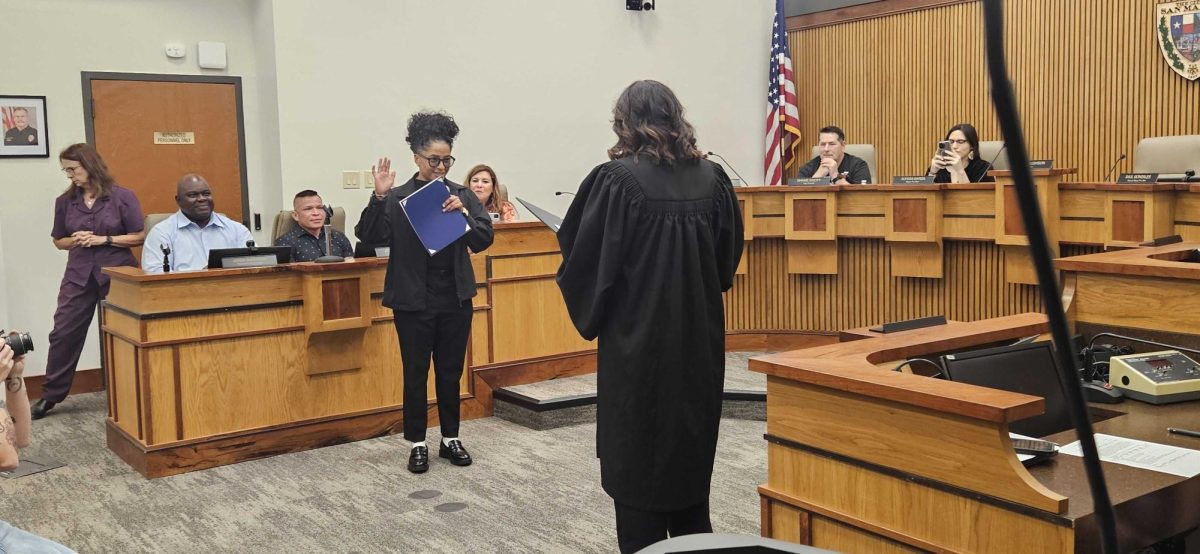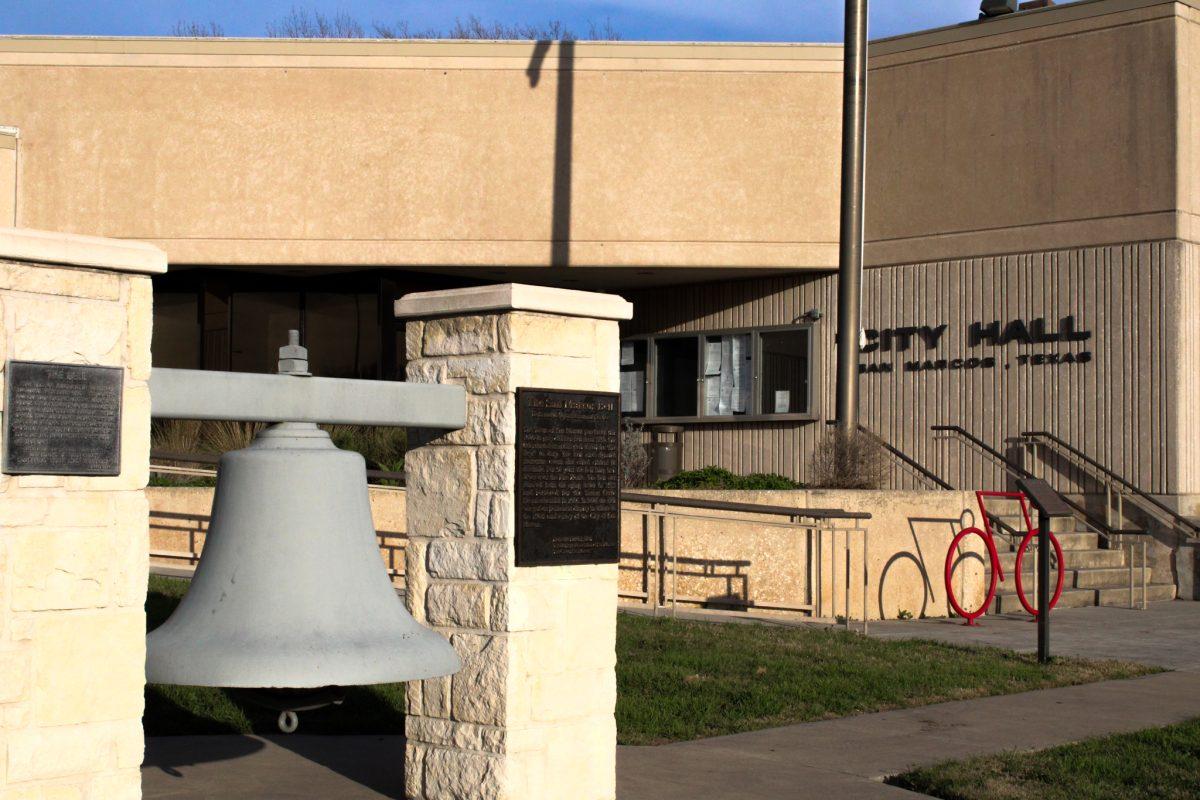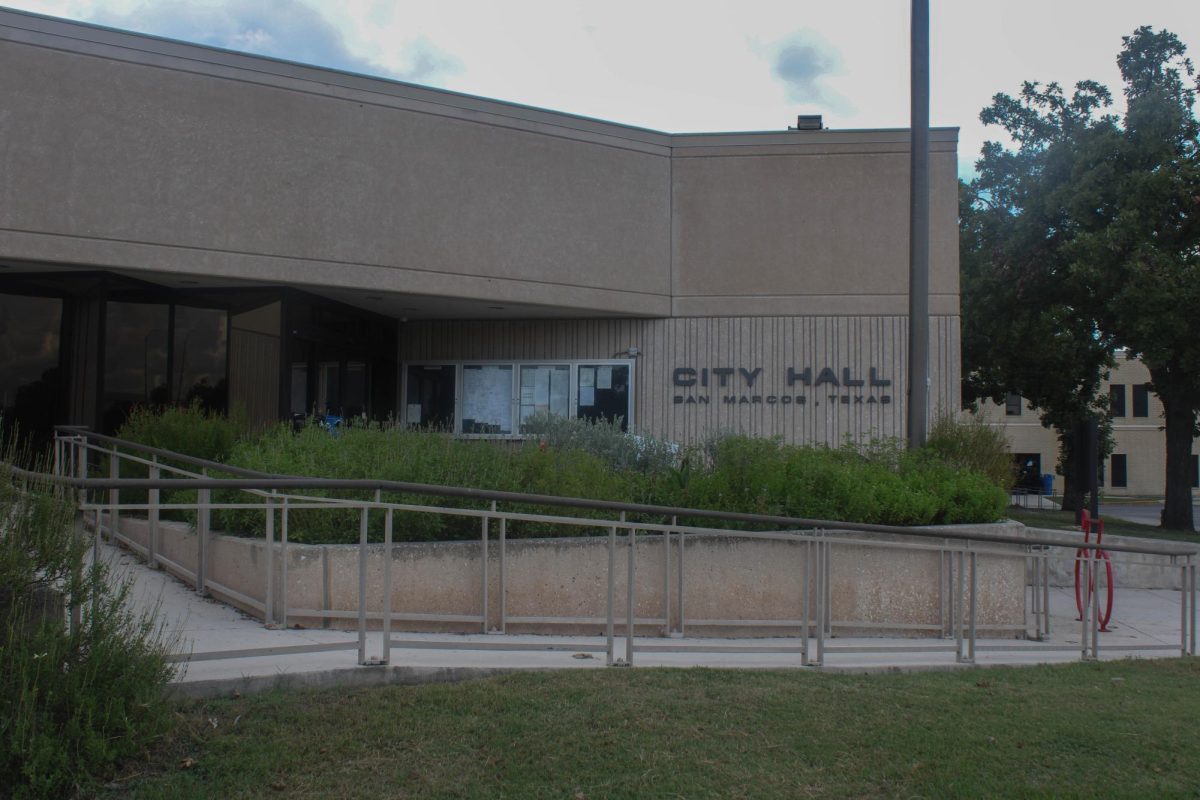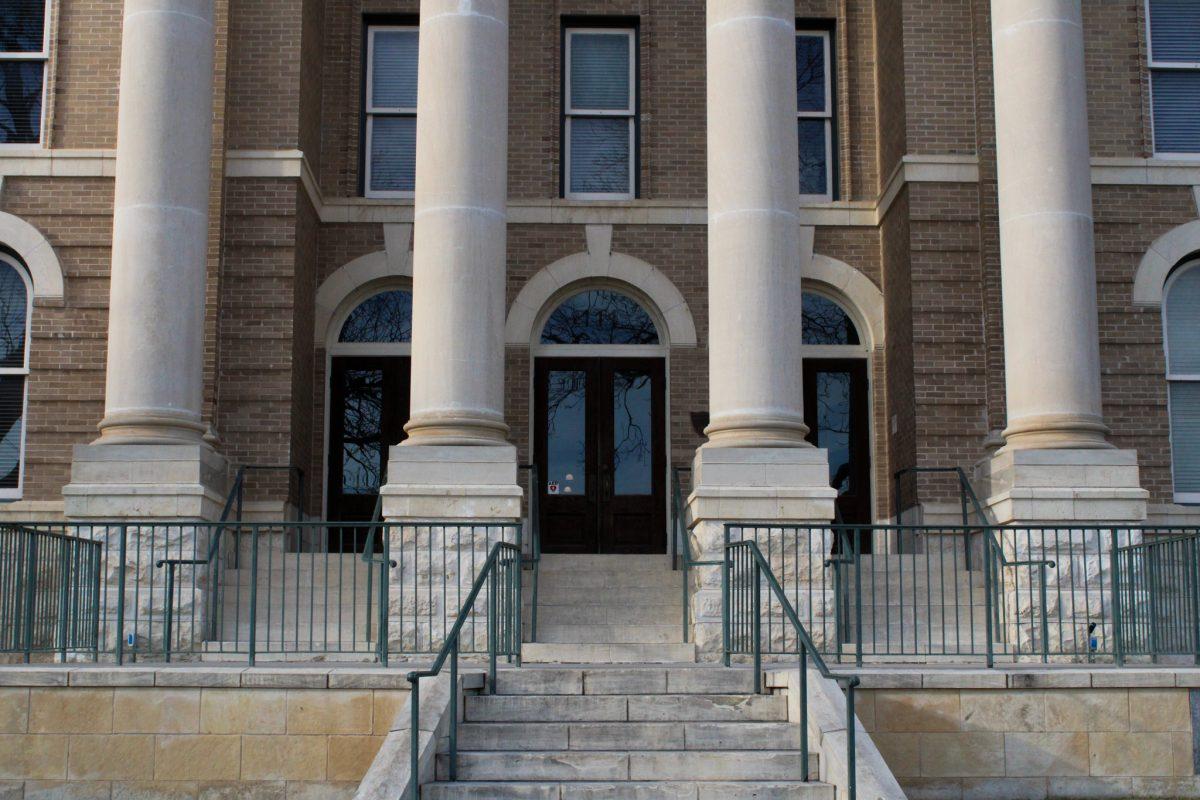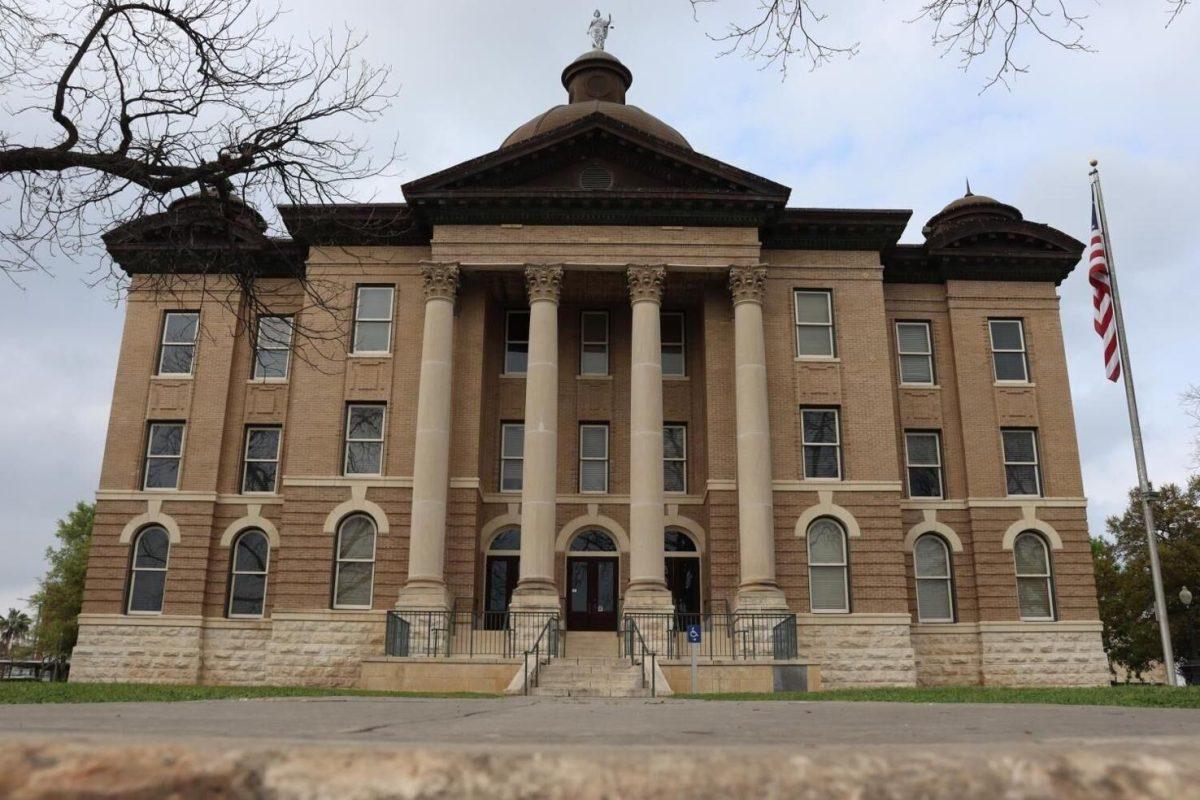After being added to its May 18 agenda, City Council debated if the cite-and-release ordinance should be dismissed and whether or not the ordinance has been the cause of enhanced crime in San Marcos.
The council voted to approve the cite-and-release ordinance on March 3, 2020. The ordinance places limitations on law enforcement’s ability to arrest civilians for low-level crimes such as possession of fewer than four ounces of marijuana, petty theft, driving with an invalid license, graffiti or any class C misdemeanor other than public intoxication, assault or family violence.
Councilmember Shane Scott indicated the council was not currently dismissing the cite-and-release ordinance, but instead, were beginning a discussion regarding possible modifications to it.
“It’s not to get rid of cite-and-release, it’s basically to help our [police chief] integrate how we’re going to be doing [cite-and-release] in this community and making it work the best for everybody,” Scott says.
Last year, councilmember Maxfield Baker voted on implementing the cite-and-release ordinance. Baker remains in support of the law, noting alterations to the ordinance would not fix the perpetrator’s motivation toward criminal activity.
“Part of why we passed this ordinance is because we are concerned about the health and safety of our community,” Baker says. “We know that arresting somebody does not make them more safe, and it does not put them in a position to have a better relationship with the criminal legal system. I think that we did a lot of research to pass this, and I would hope that any consideration to suspend or change or amend or water down this watershed ordinance, landmark ordinance, without that same due diligence is disrespectful to the hard work that we poured into this — to make it as bedrock solid as we could.”
Some council members believe the ordinance grants more leeway to crime offenders rather than support for crime victims. These councilmembers say this factor might also contribute to higher crime rates. Councilmember Mark Gleason supports the cite-and-release ordinance but believes it needs to be reconsidered in order to better assist crime victims.
“I have been very adamant. I do not have a problem if we do want to mandate this as a compromise for marijuana possession, because I think that’s where a lot of the support comes from this,” Gleason says. “I think a lot of people don’t understand the damage this does to businesses, to homeowners. When we’re talking about theft and damage and vandalism, that is not a victimless crime. I want to be very adamant about that. I hope we do keep talking about this because this isn’t something we can just put on [the agenda] and just not talk about.”
San Marcos Chief of Police Stan Standridge attended the meeting to provide data from his recent city crime analysis, citing that the cite-and-release ordinance is not driving an increase of violent crime. The initial analysis also indicated a minute difference between violent crimes and property crimes.
“According to my crime analysis, we’re only 8% differential between violent crime, meaning 8% lower than property crime, violent crime being inclusive of aggravated assaults, robbery, murder and rape for those four classic classifications of violent crimes to nearly equal your property crime, we have a considerable issue on our hands,” Standridge says.
Standridge says the frequency of theft and minor crimes reduced this past year. However, he believes this factor cannot be directly attributed to the cite-and-release ordinance because of the effects of the pandemic.
“We cannot claim the cite-and-release is the antidote for these grounds because the reality is COVID had an impact. So, all of that is skewed because of COVID impact,” Standridge says.
In order to make an accurate decision on how to modify and continue on with cite-and-release, the council decided Standridge should complete the crime analysis first. After the completion of the analysis, the council will then make further decisions on the ordinance.
A presentation and public hearing was held to gather information and public concerns regarding housing and community development needs. The presentation also covered the relocation of funding to the 2021-2022 Community Development Block Grant (CDBG) Action Plan.
The council was presented with options on how to move forward with the annual action plan for the CDBG entitlement funding 2021-2022 program, which starts in October. The funding caters to the “development of viable urban communities”. However, applicants will only be granted funds if they serve people of low-to-moderate income, work to eliminate slum areas and cater toward urgent needs during emergency natural disasters, such as COVID-19.
The federal government has allocated the city $766,482 in CDBG funding. $56,932.87 of last year’s funding will also be reallocated.
The application process to apply for CDBG funding will run from May 23 to June 18. On May 27, the city will hold a stakeholder workshop, geared toward citizens or anyone unfamiliar with the application process, to provide more information.
An applicant workshop will be held for people who intend on submitting an application. The workshop will help answer applicants’ questions and assist applicants with filling out applications. On Aug. 3, final decisions will be declared regarding which projects will be awarded money.
While low-to-moderate income can describe many people, Zach Sambrano, who spoke during the public hearing, says funding should not only be allocated to single-family housing but all kinds of housing.
“I’ve heard a lot of the community say as your taxes go up, that they just don’t know if they can continue to afford to live here in San Marcos,” Sambrano says. “I’ve talked to a lot of my classmates, they’re trying to buy houses, and they just say ‘Zach, we can’t afford to live here’. So, I have to look at places like Kyle and New Braunfels, I mean I just think as a city, who says a priority of theirs is to look into affordable housing options, that we’re not doing enough. So, I would like to see some of this money going to alternative forms of housing, outside of single detached family homes.”
City Council also authorized the keeping of miniature goats in conventional residential zoning districts and postponed an agreement with Kissing Tree Golf Club on providing greens fee discounts to San Marcos residents. The postponement was made after Scott suggested the initial 10% discount be raised to 25%. This discount now awaits approval from Kissing Tree.
Currently, once city officials, such as councilmembers and commission members, are inducted into office, they are suggested to take ethics training. However, to ensure officials actually undergo the training, City Council voted to make the training a requirement. The motion to make this requirement an ordinance passed 6-1, with Scott voting against.
The council also unanimously approved the official zoning map of the City in Case No. ZC-21-01, a multifamily living complex. The complex will be built on approximately 6.698 acres of land generally located in the 100 Block of Centerpoint Road. The complex’s initiative is to provide a shopfront apartment that has accessibility to stores and other necessities within walkable distance.
The San Marcos City Council meets virtually at 6 p.m. every first and third Tuesday of each month. For more information, visit the City Council website.
Categories:
City Council considers continuation of cite-and-release
Timia Cobb, News Editor
May 19, 2021
0
Donate to The University Star
Your donation will support the student journalists of Texas State University. Your contribution will allow us to purchase equipment and cover our annual website hosting costs.
More to Discover



